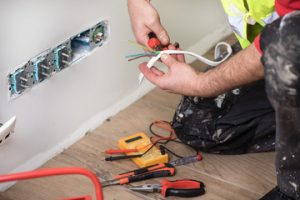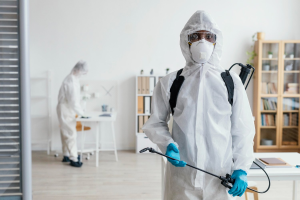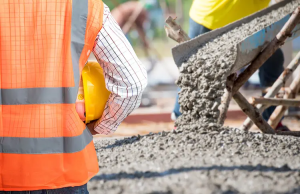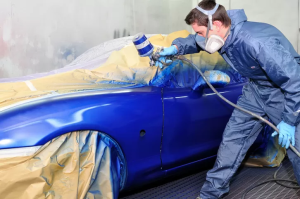Gutter Installation Gainesville FL is a critical component of protecting your home from water damage. Choosing the right materials and properly installing them can help to ensure long-lasting performance.

Proper planning can also reduce your project timeline. This includes making sure that you’ve finalized material, style, and color selections well in advance of the installation day.
Gutters are a vital part of your roof system. They help to control water and debris from getting under your shingles, protecting your home from foundation damage and premature rot. The good news is that your gutters can last up to 20 years when they are properly installed and maintained. But the bad news is that a poorly installed gutter can lead to a host of problems, including leaks and basement flooding. That’s why it’s important to avoid common gutter installation mistakes, such as improper slope and downspout placement.
A gutter is a system of tubes that collects rainwater from your roof and drains it away. It can be made from a variety of materials, but aluminum is the most popular choice because it’s lightweight and durable. It also comes in a wide range of colors to match your home’s style. Copper and galvanized steel are other options.
While you can install your own gutters, it’s best to leave the task to a professional. They’ll have the training and expertise to ensure that your gutters are correctly positioned, fitted, and sealed. They’ll also be able to provide you with a wide selection of gutter materials and styles, so you can choose the perfect ones for your home.
It’s important to have a properly installed gutter system, but it’s equally essential that you make sure downspouts are discharged far enough away from your foundation. This will prevent clogs, which can cause water to seep through the walls of your house or even into your foundation. A downspout that’s too close to the foundation can cause premature rot, which is one of the most costly and difficult gutter problems to repair.
You’ll want to be sure that your gutters are securely fastened to the fascia boards using stainless-steel screws. It’s also a good idea to apply a high-quality sealant around the seams and connections. Finally, it’s important to test the system by running water through it to check for any leaks or problems. By following these simple tips, you can ensure that your gutter system is well-installed and ready to protect your home for years to come.
Don’ts
Gutter installation is a significant home improvement project that safeguards your house from costly water damage. It may appear simple, but the process requires precision and expertise. Attempting to install gutters without the necessary skills can lead to errors and suboptimal results. Here are some of the most common mistakes homeowners should avoid making during gutter installation.
Don’t Forget to Remove Old Gutters
Many people try to skip this step, but this is a crucial one. Leaving your gutters in place can lead to further damage and clogging, as well as rotted fascia and foundation boards. Before starting on a new installation, make sure you remove any existing gutters to prevent future issues. A professional can help you with this task if necessary, and will ensure the proper removal of nails, screws, and rivets.
Don’t Skip Over the Measurements
Measuring the roofline and other aspects of your home accurately is essential for ensuring an efficient gutter system. Taking the time to do this can save you money and frustration, as well as prevent a messy installation. To get accurate measurements, it’s a good idea to use a level and a tape measure.
Don’t Skimp on the Downspouts
It’s important to have downspouts that can effectively drain water from your home’s foundation. This is important to prevent basement flooding and other water damages. To ensure the effectiveness of your downspouts, they should be positioned a minimum of 7 to 10 feet away from your home’s foundation. If the downspouts are too close to your foundation, you can add a splash block or downspout extension to redirect the flow of water.
Don’t Forget to Cover the Corners
Using a strip miter is a great way to cover seams and create a more attractive appearance for your gutter system. This is especially important for older gutters that may show signs of wear and tear. The strips can be painted or installed with a pop rivet to match the rest of your gutters.
While DIY gutter installation can be an effective way to protect your home, it’s not a job for beginners. Complex gutter installations and those involving multistory homes are best left to professionals who have the knowledge and experience required.
Materials
Gutters help to protect homes from foundation damage, siding, and basement flooding by directing rainwater away. Proper gutter installation and regular maintenance can also extend the life of the gutter system. When selecting a gutter system, homeowners can choose from various materials based on their preferences, cost and installation requirements.
The most popular gutter material is aluminum, which is lightweight and durable. It rusts less than galvanized steel, making it an ideal choice for heavy rainfall areas. Other options include copper, which is both aesthetically pleasing and long-lasting. However, it’s typically more expensive than aluminum.
Other factors that can impact the price of gutters include their size and style. A larger gutter system with a greater volume of water flow requires more downspouts and brackets to support the weight of the gutters and prevent leakage. The gutters’ length is another important factor, as it dictates how far down the rainwater will flow away from the house.
Before beginning the gutter installation process, it’s vital to evaluate the work site. Make sure to remove any debris or obstacles that could cause hazards while working and set up a ladder on a stable, level surface. This will ensure safety for yourself and anyone assisting with the installation. It’s also essential to have all necessary tools nearby to minimize time spent searching for items while on the ladder.
To begin the installation process, measure the roof edge’s length to determine how much guttering to purchase. Then, cut the gutters to length using a hacksaw or tin snips. It’s important to measure twice and cut once, as any mistakes can lead to unnecessary waste. After the gutters are cut, they can be fitted with hangers and brackets to secure them to the fascia boards or eaves of the home. The brackets can be in the form of spikes that are driven into the fascia board or straps that wrap around the gutter. Downspouts are then connected to the gutters, and elbow joints connect the different downspout sections. Finally, end caps are added to the open ends of downspouts to seal off the channel and prevent rainwater from spilling out of them.
Budget
Gutter installation is an important home improvement project that safeguards your house from damage, but the timeline for the process varies greatly based on many factors. These include the materials used, the size of your house, and any extra features like gutter guards. In addition, external elements can further impact the schedule, necessitating flexibility and clear communication between you and your contractor.
Gutters collect rainwater and direct it away from your foundation, siding, and landscaping to prevent water runoff that could cause mold and structural damage over time. Gutter systems also help avoid clogging that could lead to overflow and basement flooding. Installing a new system or replacing your old one should be done during the dry season when there isn’t much risk of additional rainy weather.
Homeowners can reduce gutter installation costs by bundling it with other home improvement services, such as roof replacement or fascia board repair. Most contractors offer discounts for bundling, reducing installation and labor costs. Investing in a professional service can also save you money in the long-term, as your gutters will be expertly installed and will last for years to come.
The type of gutter material will impact both the price and longevity of your new system. For example, aluminum is more expensive than vinyl, but it also offers greater durability. A reputable company can provide tailored advice that balances cost and quality, helping you choose the best option for your needs.
Before purchasing gutters, homeowners should take the time to measure their roofline and consider where they want downspouts to be placed. Using a tape measure, you should record the length of your roofline and then add a few feet to account for overhangs and corners. Ideally, you want downspouts to be spaced out every 30 to 40 feet, directing water from the eaves away from the foundation of your home to prevent water accumulation and moisture issues. Downspouts are an integral part of a complete gutter system and should not be overlooked.








